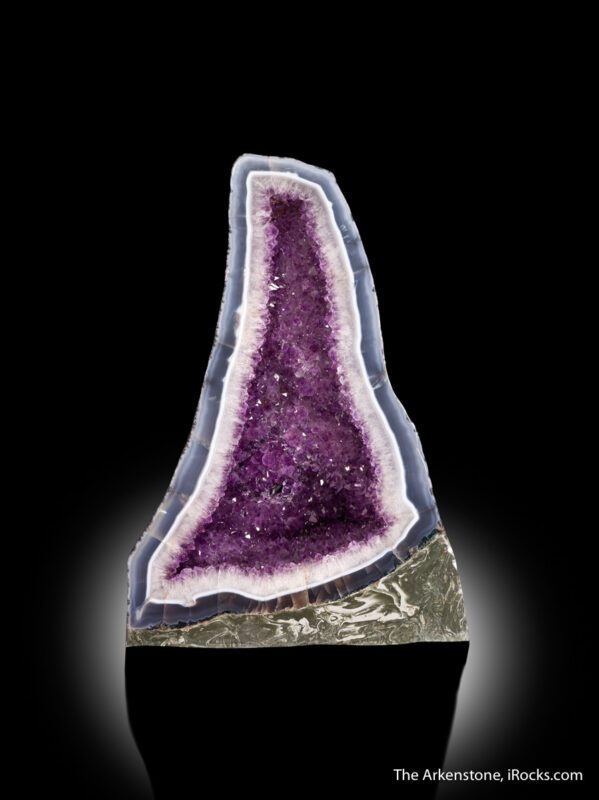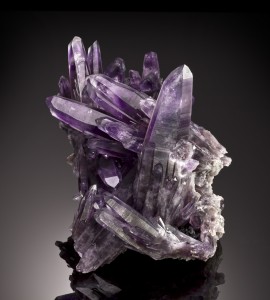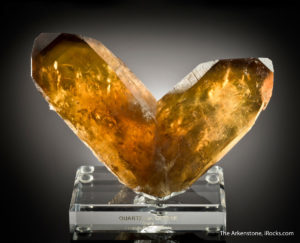Amethyst Geode Themed Wedding Cakes!
The love for rare rocks and minerals has taken over the culinary world with the detailed work of amethyst themed wedding cakes. Recently, The Arkenstone supported the creation of a stunning geode cake for our Dallas Mineral Collecting Symposium as part of a 90th birthday celebration for speaker Bob Jones, but the cake style first hit popularity in Denver.
Using edible sugar, rock candy, dyes and moldable chocolate, Rachael Teufel of Intricate Icings has started an exciting new trend that foodies and rockhounds love. Unveiled at an industry event, the tall white cake sparkles with realistic amethyst crystals hollowed into its side like a geode.
From the Intricate Icings website, Rachael explains her geode inspiration and how the cake was made:
The cake was the centerpiece for one of the three “emotion” inspired vignettes that evening. The stunning ‘Joy’ inspired vignette showcased a variety of geodes. It included rich textures, deep colors and lots of light letting the natural beauty and shape of geodes lead the design. Joy speaks of experiencing something that pleases the eye, warms your heart and soothes the soul.[1]
Rachael’s amethyst geode cake took 16-hours and an eye for details to make. As rockhounds, we can appreciate the dedicated work it takes to replicate one of nature’s most astonishing rare minerals.
Geodes in Nature

Amethyst Geodes like this one are a hot trend in home decor and provide inspiration for the popular geode cake trend.
The amethyst inside a geode is a byproduct of mineral deposits lining the interior cavity. It can take thousands to millions of years for massive geodes to form under extreme steady heat and pressure. The exterior of the geode may look like an unimpressive rough stone, but the interior cavity of the geode is lined with a mass of crystalline minerals whose natural beauty inspired the amethyst geode cake.
Most geodes are found within igneous rock with cavities created by the cooling of lava. The exact process for how these cavities are formed is still somewhat a mystery, but some popular theories suggest the bubbling activity of the lava leaves pockets for gas to escape.[2] As the molten rock of the geode cools and the gas escapes, a cavity is left behind for mineral enriched water to create crystals.
Geodes can also form within sedimentary rock like calcite and limestone. A popular theory for geodes in sedimentary rock suggests ground water drying from the ground and hardening into cavities.[3] This would occur in a cycle with water leaving mineral deposits for the crystals to grow.
The Colors of Quartz Crystals
The chemical composition of the minerals inside a geode are highly representatives of their environment as temperature, acidity, and elements in the water form crystals. The most common mineral found within geodes is quartz since silicon dioxide, or silica, is plentiful in all forms of rock.
Amethyst is a purple variety of quartz crystal. The formation of amethyst in a geode comes from iron impurities in the mineral enriched water. This is where amethyst crystal structures get their color ranges from a light -lilac to deep, royal purple. Depending on the angular zones of the amethyst crystals, angling light in certain directions can help bring out deeper purples of a specimen.
Another variety of quartz found in geodes is citrine. They’re light yellow to orange in color and are rarely formed in nature. Citrine is a type of amethyst that has been exposed to intense heat, changing its color from purple to yellow. In geodes that have produced citrine, it is common for the citrine and amethyst to blend and create ametrine.
Amethyst geodes are formed through a complex process that can take thousands to millions of years. Whether you’re assembling a collection for a museum or making a wedding cake, the beauty of these rare rocks and minerals is something we can all appreciate.
Love quartz? Explore more about quartz in our blog article, Favorite Types of Quartz!
Searching for geodes to add to your rare rock and mineral collection? We’ve recently added to our collection of rare rocks and minerals for sale after our shows in Denver. You can also find our other rare rock and mineral collections here.
Also, don’t miss our listings for our rare rock and mineral shows. We’d love to meet with you and talk about the specimens in our collections!
[1] Rachael T. “Amethyst Geode Wedding Cake”. Intricate Icings. http://www.intricateicings.com/single-post/2016/1/22/Amethyst-Geode-Wedding-cake
[2] Roger W. “Geodes”. Cochise College. http://skywalker.cochise.edu/wellerr/students/geode/Geodes.htm
[3] Ibid.

